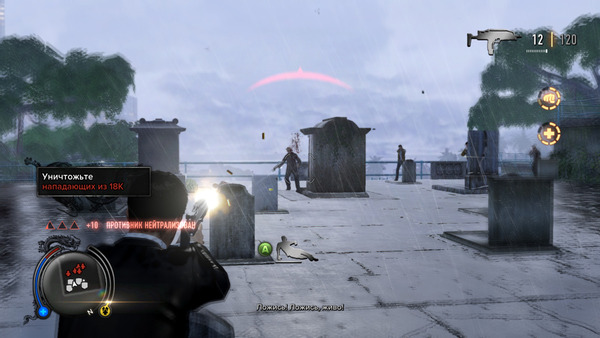“Sleeping Dogs” is an open-world action-adventure game set in a fictionalized version of Hong Kong, lauded for its immersive storytelling, gritty atmosphere, and fluid martial arts combat system. While the game excels in numerous aspects, one feature that stands out both for its complexity and controversy is the combat mechanics. Beneath the surface of simple brawling, Sleeping Dogs’ combat system hides layers of depth, rewarding skill but also causing frustration at times. In this article, we’ll dive deep into the specific issue of the combat mechanics in Sleeping Dogs, focusing on its strengths, weaknesses, and how players can master it. We’ll also look at how it compares to other similar games and why it leaves a lasting impression on players.
1. The Foundation of Sleeping Dogs’ Combat System
The combat mechanics in Sleeping Dogs are built around fluid, martial arts-inspired hand-to-hand fighting. Drawing comparisons to the Batman Arkham series, Sleeping Dogs puts emphasis on counters, combos, and environmental interactions. The foundation is built to feel responsive and rewarding, where timing and skill are essential.
The core of the system is designed to make players feel like they’re in the middle of a martial arts film, with dynamic animations and bone-crunching sound effects. This visceral design encourages players to rely on melee over firearms, staying true to the game’s Hong Kong cinema roots.
However, underneath the engaging exterior, players quickly notice that mastering the system requires more than button-mashing. The game’s insistence on timing, positioning, and strategic use of space adds layers to the experience that can be both satisfying and punishing.
2. The Role of Counters in Combat
One of the primary mechanics in Sleeping Dogs combat is the counter system, which is essential for survival in tougher fights. Much like the Arkham series, a successful counter interrupts enemy attacks and gives Wei Shen, the protagonist, the upper hand. The problem lies in the strict timing window for counters, which can make the system feel unforgiving, especially for new players.
Players often struggle with reading enemy attacks, particularly when surrounded by multiple foes, leading to situations where missed counters become devastating. To mitigate this, players must develop an understanding of enemy behavior patterns and anticipate attacks.
3. Mastering Combos: A Skill-Based Approach
Unlike traditional beat ‘em ups, Sleeping Dogs offers a combo system that requires precision and rhythm. Basic attacks can be chained into advanced moves like leg sweeps and throws. However, these combos are not immediately accessible to the player and must be unlocked progressively through leveling and completing missions.
This slow drip of combo unlocks can create a learning curve, especially for players who are used to simpler systems where all moves are available from the start. Yet, once mastered, the combo system allows for creative expression in combat, rewarding players who can seamlessly link moves.
4. Environmental Attacks: Enhancing Combat Depth
One of the standout features in Sleeping Dogs is the use of environmental attacks. Players can interact with objects in their surroundings to finish off enemies in brutal ways—whether it’s slamming someone’s head into a car door or throwing them into a dumpster. These environmental takedowns not only provide variety but also act as powerful tools to quickly dispatch foes.
However, the reliance on these environmental attacks can also make combat feel repetitive after prolonged play sessions, as certain areas of the game provide very limited environmental options. This can lead to a lack of combat diversity in some parts of the game.
5. Balancing Melee Combat and Firearms
While the focus of Sleeping Dogs is on martial arts, the game does introduce firearms in later stages. The contrast between melee and gunplay presents an interesting challenge in pacing. The melee-focused early game often leaves players unprepared for the sudden shift to ranged combat.
The introduction of guns changes the dynamic significantly. Although firearms add to the variety, they somewhat dilute the intensity of hand-to-hand combat that defines the game. Players are often forced into gunfights in missions, even when they’d prefer to stick with melee.
6. Enemy Variety and Its Impact on Combat
One of the more challenging aspects of Sleeping Dogs combat comes in the form of enemy variety. The game introduces several enemy types, each with different attack styles and vulnerabilities. Standard thugs can be beaten with basic combos, but grapplers require counters and timing to avoid being grabbed, while heavily armored enemies necessitate environmental takedowns or firearms.
This variety keeps combat from becoming stale, but it also forces players to adopt a multi-layered approach to each encounter. Failure to quickly identify and adapt to different enemy types can lead to frustrating losses, particularly in crowded combat scenarios.
7. The Role of Upgrades and Skill Progression
As players progress, they unlock new abilities through skill trees. These trees are split into two paths: Triad and Police, representing the dual life Wei Shen leads as an undercover cop. Each path offers unique combat upgrades, such as increased damage or faster counters.
While the upgrades can make combat more manageable, there is a disparity in usefulness between the two paths. Many players find themselves leaning heavily into one tree, often ignoring the other. This imbalance can reduce the effectiveness of Wei’s development, making certain abilities feel redundant.
8. Realism vs. Gameplay Fluidity: The Balance
Sleeping Dogs aims to blend realism with cinematic flair, but this balance doesn’t always land perfectly. For instance, the game’s animations are fluid and responsive, but the realistic movement can sometimes feel sluggish, especially when compared to other open-world games with faster combat mechanics.
The weighty animations and realistic physics contribute to immersion but can occasionally lead to unresponsive controls. Players often feel this during high-stakes combat, where precision is crucial but hindered by the slower movement.
9. Combat Difficulty and Accessibility
Another key issue with Sleeping Dogs combat system is its difficulty. While the learning curve can be rewarding for dedicated players, it poses challenges for casual gamers. The precise timing for counters, the complexity of combos, and the focus on environmental attacks create a barrier to entry for some.
There are no difficulty settings to adjust combat, meaning players who struggle with timing and precision will find the later stages of the game frustrating. This lack of accessibility can turn some players away, especially those seeking a more casual experience.
10. How Combat Influences the Narrative
The combat mechanics in Sleeping Dogs are deeply tied to the game’s narrative and character development. Wei Shen’s proficiency in martial arts represents his connection to his past, while his use of firearms highlights his role as an undercover cop. The evolution of combat skills mirrors Wei’s internal conflict, balancing his loyalty to the Triads and his duty as a police officer.
While this duality enriches the story, it also highlights a disconnect in gameplay. Players may feel torn between choosing to engage in brutal martial arts or gunplay, which can dilute the game’s thematic depth.
Conclusion
The combat mechanics in Sleeping Dogs are a double-edged sword. On one hand, they offer a deep and rewarding system that keeps players engaged through timing, combos, and environmental interaction. On the other hand, the steep learning curve, unbalanced progression, and reliance on strict timing can alienate casual players. Despite these shortcomings, the game’s combat remains a standout feature, contributing to its lasting appeal in the action-adventure genre. Players willing to invest time in mastering the mechanics will find themselves immersed in an exhilarating combat experience that blends realism with cinematic action.


